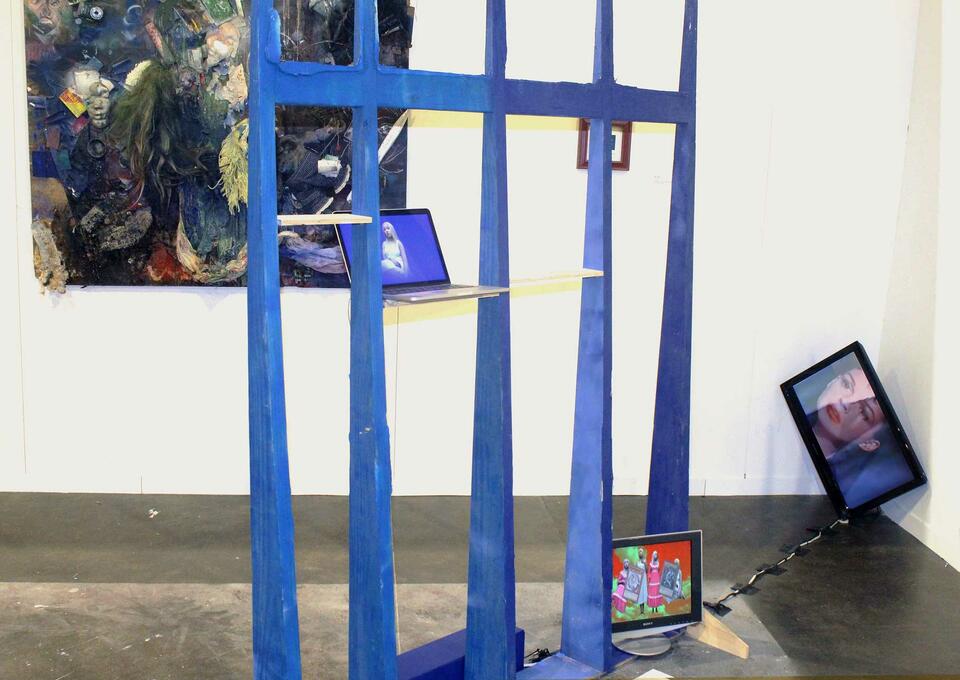Cloris Ding
Pulling and pushing the needle with hair through fabric enables my thoughts to settle and take form. Traditionally considered a "feminine" skill, embroidery becomes a vehicle and an equipment for me to combine with jewelry in the discourse of female topics.
Initiated from personal reflections on my relationship with my mother, my pieces recognize the multifaceted nature of the passage of womanhood, and seek to honor them. Inspired by the hair memorial pieces from the Victorian period, I see hair as the juncture of my creation, starting from my mother's indelible care and bond, to serving as a representation of women's self-realization and self-empowerment.
Upon female-topic discussions, I am an empathizer, a recorder, and a messenger. The resulting jewelry pieces become more than adornments, but testaments of the narratives and homage to surrounding women's experiences.
To “The Second Sex*”!
(*: the title of a book written by Simone de Beauvoir)
An old photo collection revealed many images of my mother in polka dot dresses, her favorite outfits. I also found pictures of myself at three, wearing my favorite yellow-green plaid shirt. Wishing to initiate dialogue with my mother, I printed these images on muslin and embroidered her polka dots on my face and my plaids on hers. This exchange symbolizes our shared memories and identities as women. The paired brooch, "your polka dot dress // my grid shirt," represents the dynamics of our relationship. With twenty-three tiny holes on my side (reflecting my age) and one larger hole on my mom’s, the wearer can adjust the distance between us by manipulating the hair knots. The piece can be sensed as a mother’s dominance over her child while they try to escape it; but more importantly, it conveys the distancing and boundaries in a mother-daughter/son relationship.
Image
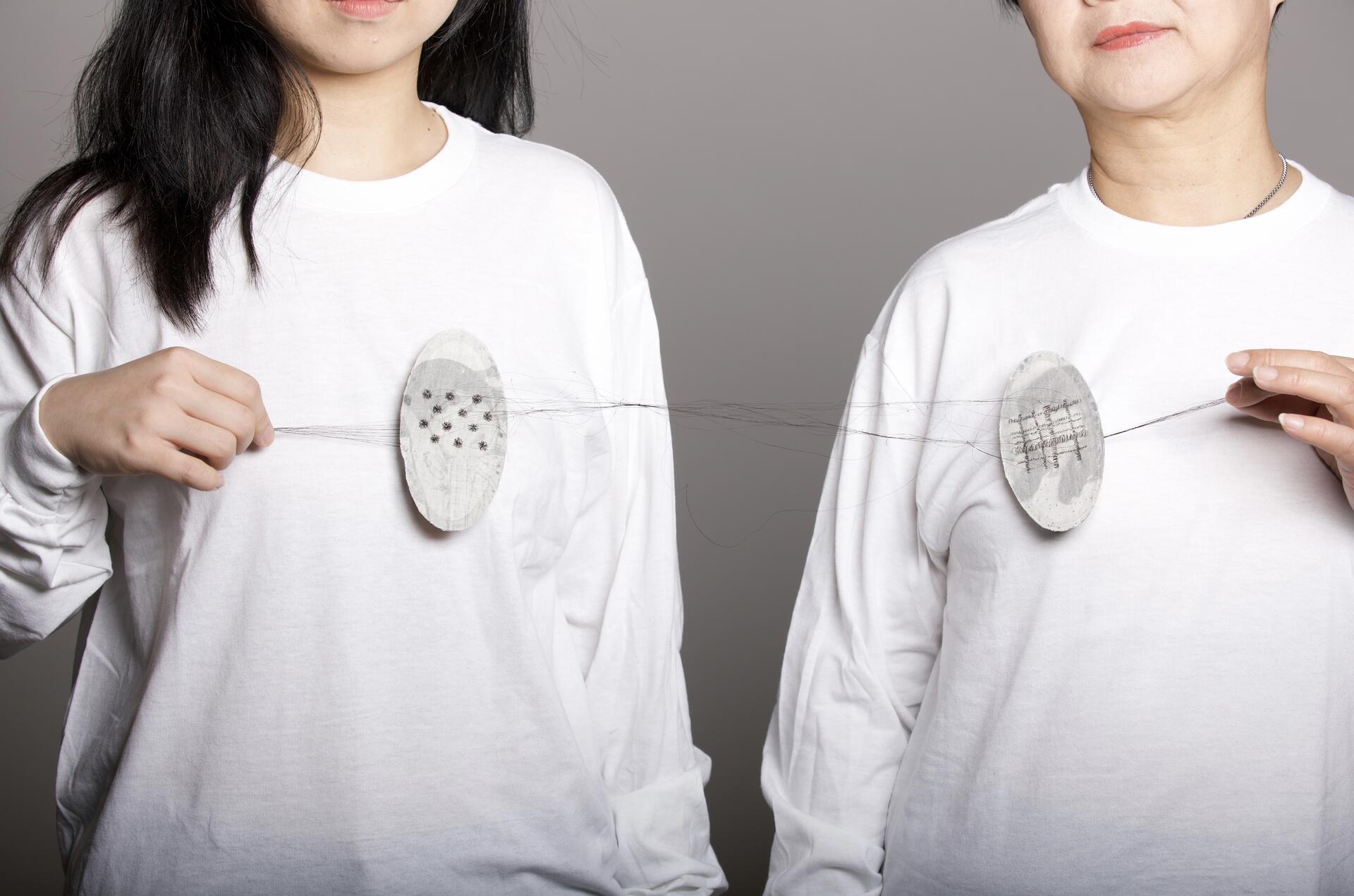
your polka dot dress // my plaid shirt
22 in, 5 in, 1 in (length adjustable)
silver, artist’s hair, artist’s mother hair, fabric, steel
My earliest memory of engaging in embroidery is closely tied to my grandmother. She crafted soft hats from fabric for me when I was a baby, adorning them with sewn flowers. While my mother, during my primary school years, would meticulously sew my name onto the cushion I brought to school. These recollections of embroidery by female family members have become a significant part of my heritage.
“It takes a village to raise a child.”
In "protection carries on -", I embroidered the floral design from my old soft hat onto the photograph recording me and all the female members from my mom’s side feeding pigeons. This piece serves as an homage to my mom, my grandma, and all female family members from my mother’s side, as to remember and carry on their inheritance. Also, it is a tender gesture toward my baby self, embracing the purest part of myself.
Image

protection carries on —
6 in, 4 in, 3 in
artist’s hair, fabric
Looking back at the old photographs and memories, I began to understand more about my mom and the lineage we share, but it is also true that I saw clearer the misunderstandings that happen between us when we sat down and talked about their stories and our shared memories.
“所见即所得” (“What you see is what you get”) may not be true sometimes in old photographs and memories.
“\\ let’s open it up //” hints on how to wear this piece: when the pendant locket is closed, two persons have to face each other or the hair cords would break. The wearability of the piece actually forces the wearers, me and my mom, to confront each other and talk. A video recording us wearing the piece and talking accompanies this piece. As the dialogue went on, more parts of us were exposed to each other that were longing for a destination.
Image
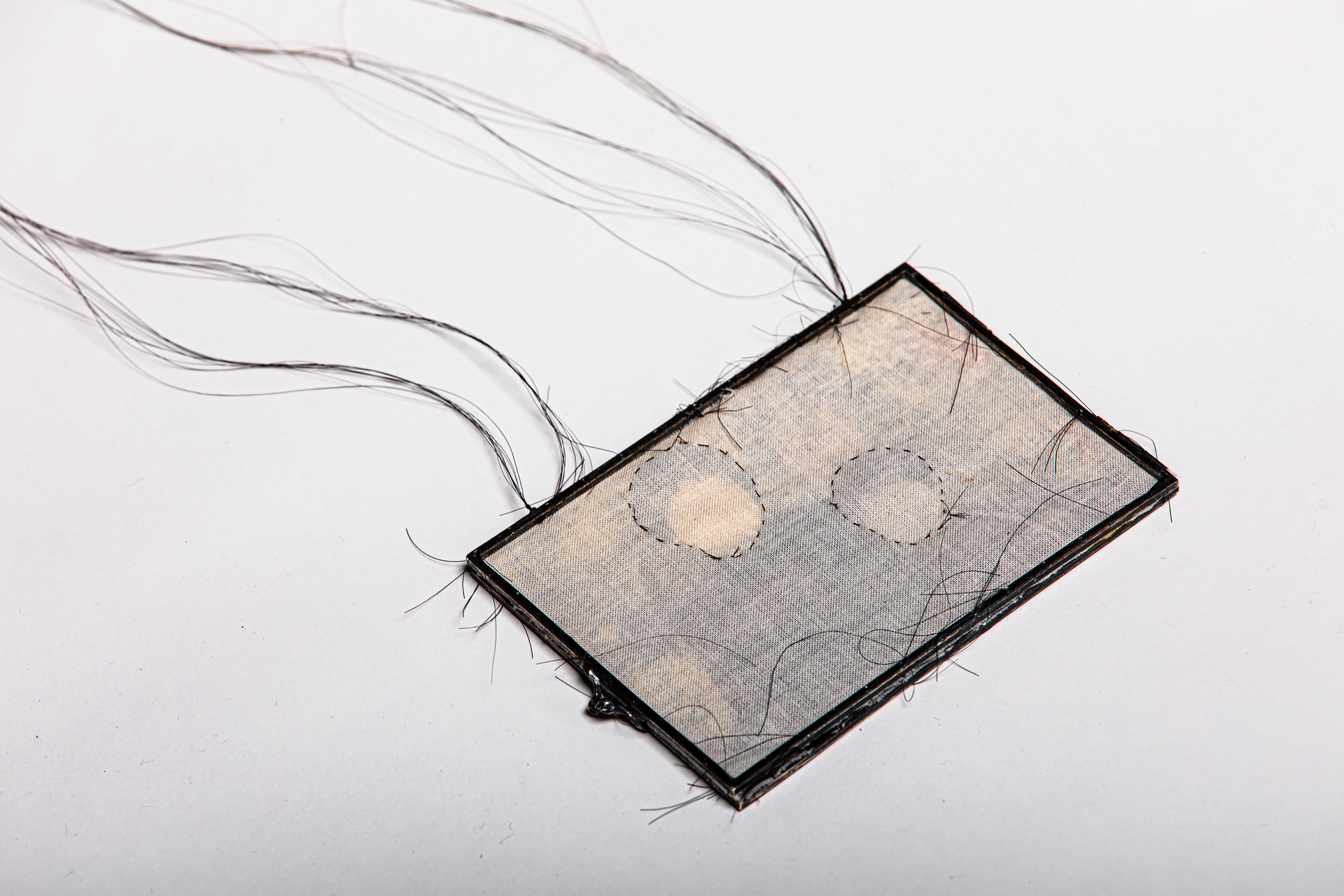
\\ let’s open it up //
21 in, 4.5 in, 0.3 in (width collapsible)
Silver, artist’s hair, fabric
I cut my hair in 2023, and my mother wasn't happy at the beginning since having a short hair does not align with "feminine beauty" regulated in the social context in East-Asian culture.
The brooch series titled "Everytime we talk, we fight" consists of seven pieces in which I embroidered my hair onto fabric. This series serves to unveil not only the tensions stemming from conversations between my mother and me but also those that exist between women and the societal regulations that confine us. The very nature of hair in art carries a tension, as it conveys diverse psychological connotations, from fascination and obsession related to our hairstyles to honor and disgust, especially when detached from the body.
Image
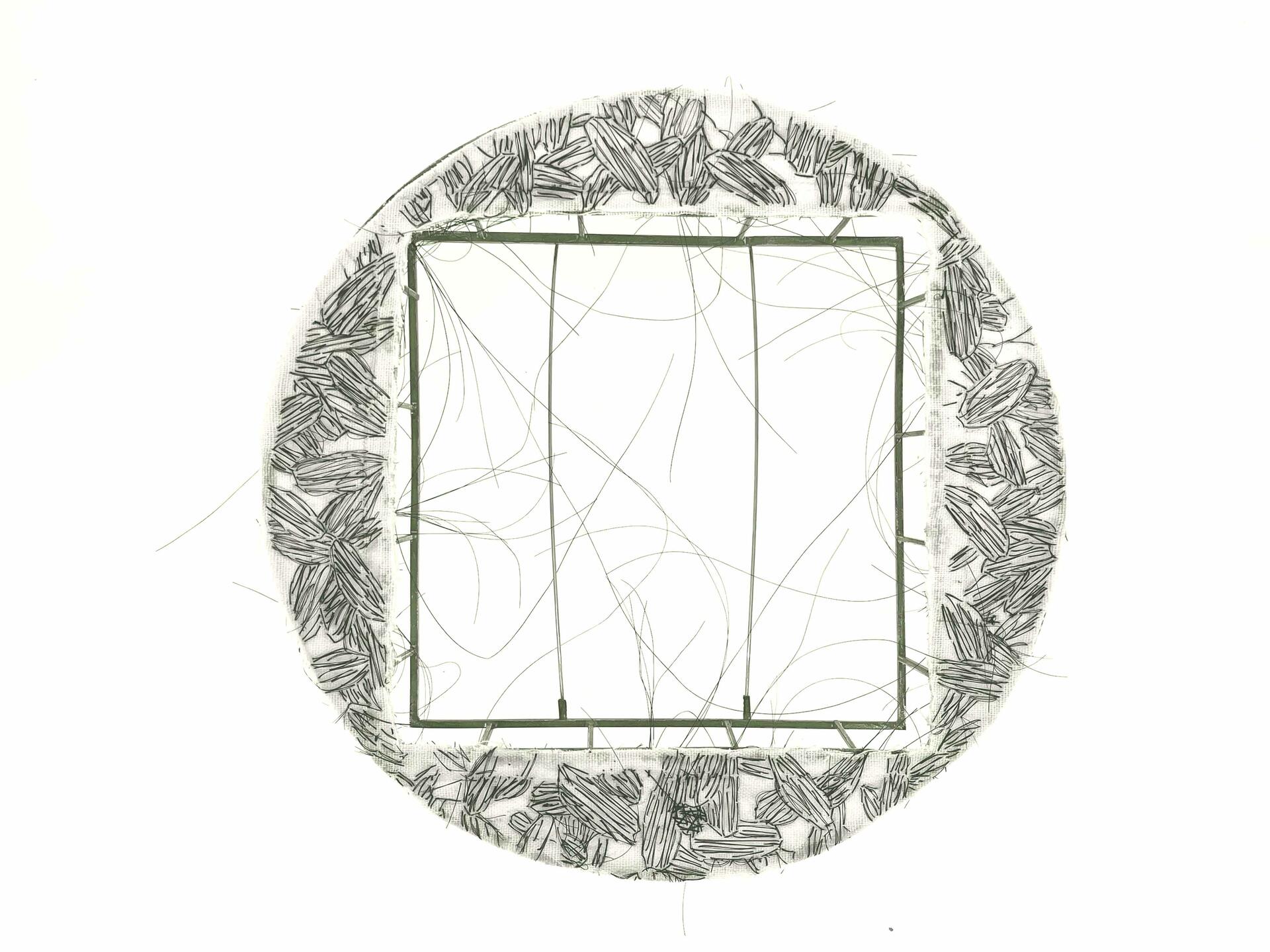
Inside One’s Heart (from “Every time we talk, we fight” Brooch series No.6)
5.5 in, 5.5 in, 1.2 in
Silver, Muslin, Artist’s hair, Steel
In each piece of this brooch series, a deliberate contrast is established between the front and the back of the brooch. The front faces the society that determines the “perfect” appearance of women, while the back touching the wearer’s heart exposes the rebellion. The front features carefully embroidered hair, while the back presents an uncontrolled and liberated appearance. These tensions and balances can be observed in various aspects of the series, including the monochromatic palette, the juxtaposition of square and circle shapes, the interplay between conflict and affection, the revelation of spoken and unspoken words, the pursuit of “the ideal” versus the quest for freedom from it, the balance between awareness and endurance, and the influence of the past and the impact of present cultural conventions. The last piece of this brooch series, in which the back of the brooch serves as the front, culminates all the tensions involved.
Image
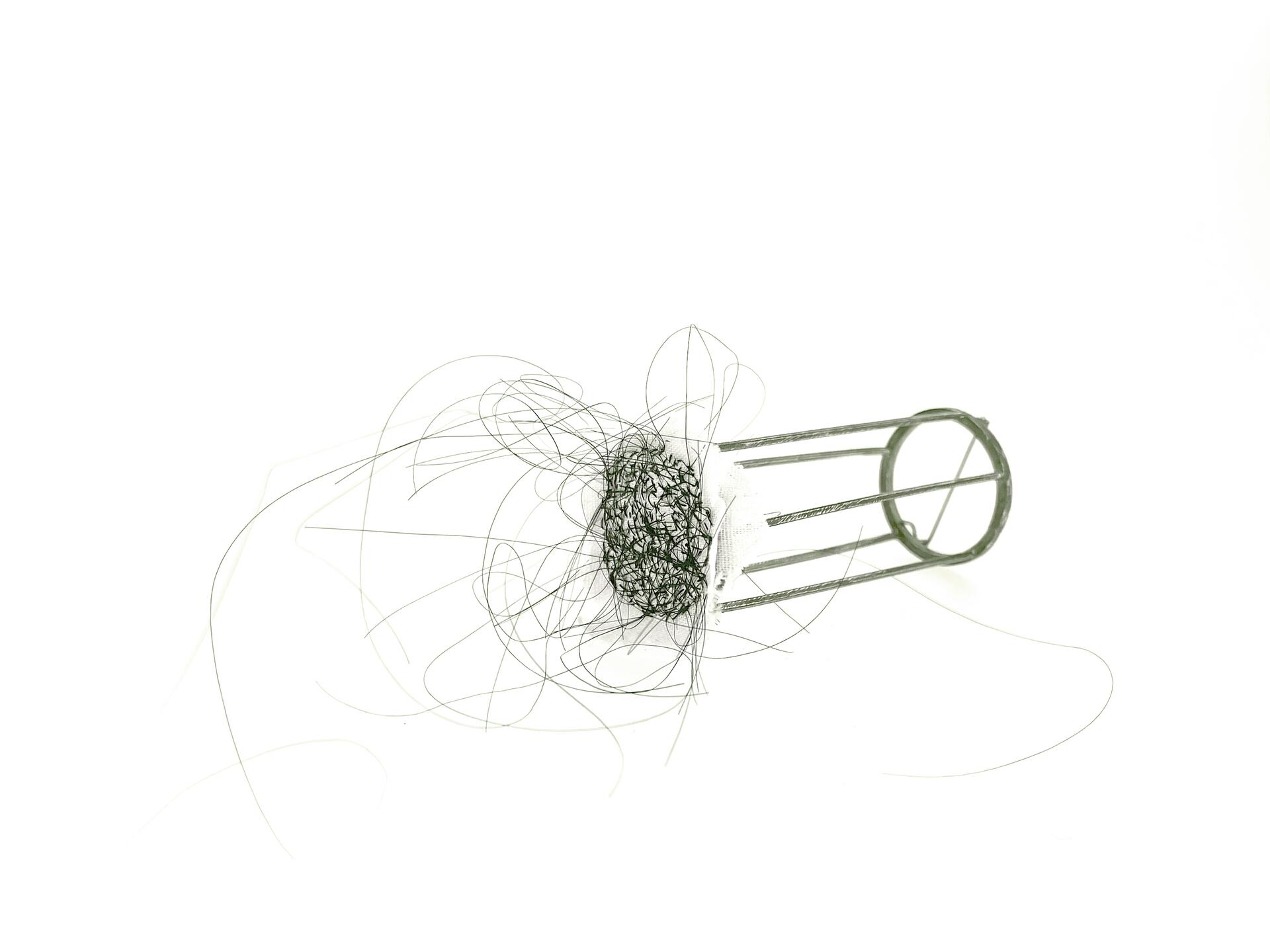
Out (from “Every time we talk, we fight” Brooch series No.7)
3 in, 4.5 in, 7.8 in
Silver, Muslin, Artist’s hair, Steel
The first piece, “The Circle”, from this collection serves as the launch of my thesis project. The circle frame and concentrated blackwork embroidery on the fabric surface create a quiet circular motion effect that allures the audience to relate and imagine the content of the conversation. The messy edge of cut fabric and hair on the back side brings duality to the piece, hinting at the tensions of the content.
In recent years, global "Me Too" movements surged, fostering widespread solidarity among women. Notably, the word 'Women' resonates phonetically with '我们' (meaning ‘us’) in Chinese. It's this resonant power that I find compelling in discussing female experiences within the realm of jewelry, drawing from my cultural background, personal and family stories.
Image
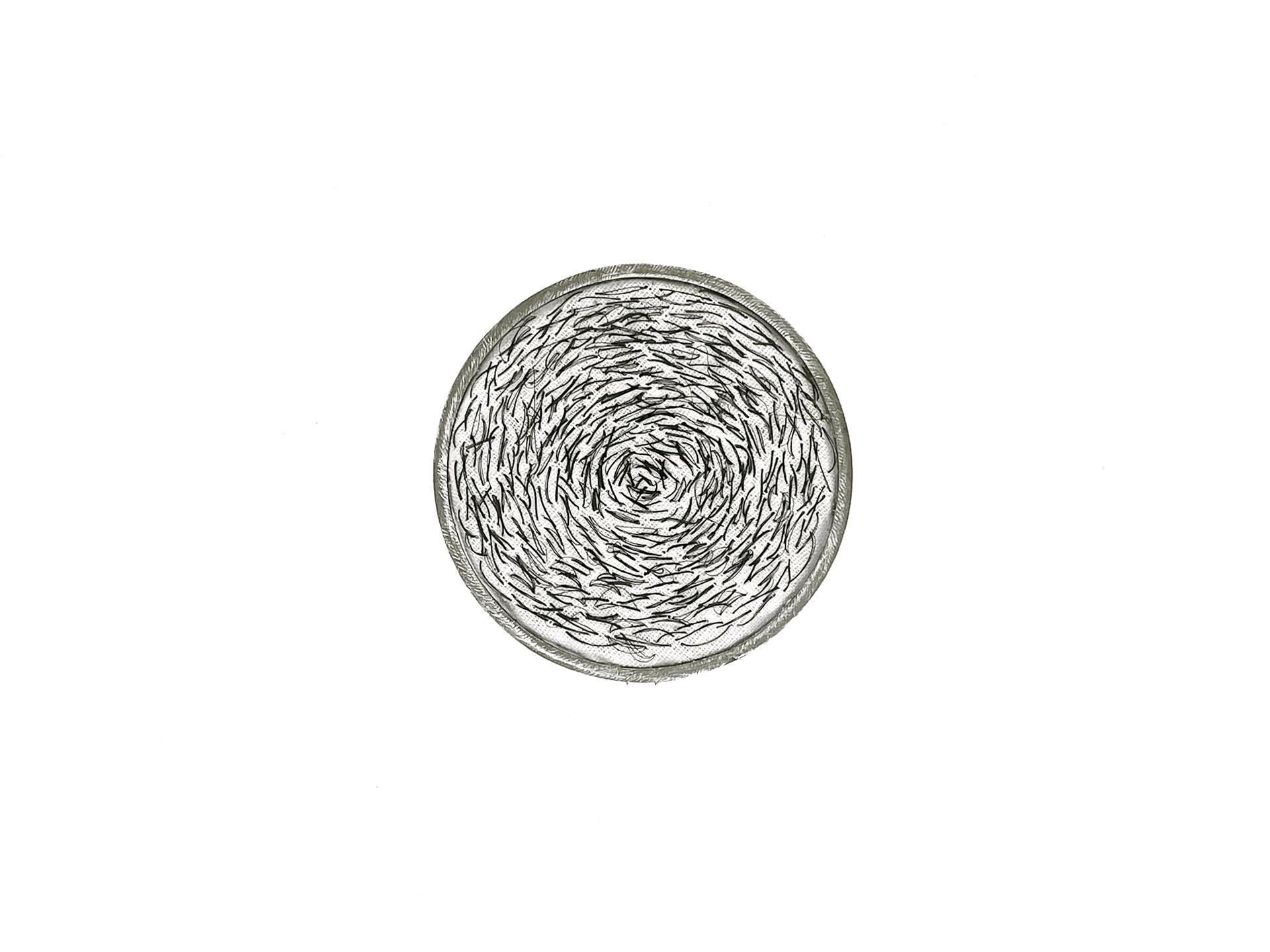
The Circle (from “Every time we talk, we fight” Brooch series No.1)
1.8 in, 1.8 in, 0.2 in
Silver, Muslin, Artist’s hair, Steel
EXHIBITION IMAGES
